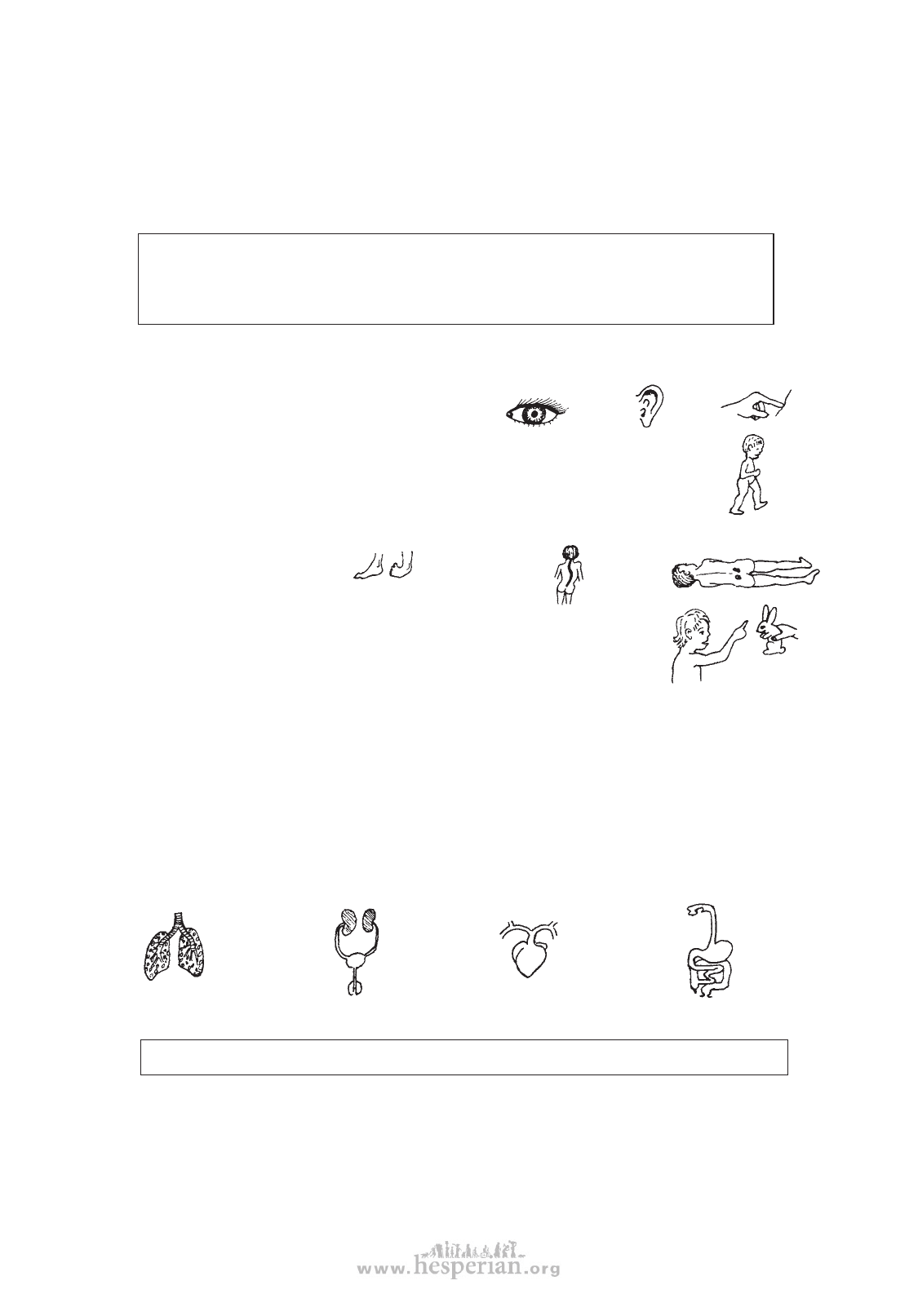
E X AMINATION
EXAMINING THE DISABLED CHILD
After finding out what we can by asking questions, our next step is to examine the
child. In as friendly a way as possible, we carefully observe or test what parts of the child
work well, what parts work poorly, and how this affects the child’s ability to do things and
respond to the world around him.
23
CAUTION: Although we sometimes examine separately different aspects of the
child’s body and mind, our main purpose is to find out how well the child’s body
and mind work together as a whole: what can the child do and not do, and
why? This information helps us decide how to help the child to do things better.
In examination of a disabled child, we may check on many things:
• The senses: How well does the child see?
hear?
feel?
• Movement: How well does the child move or control her movements?
• Form and structure: How well formed, deformed, or damaged are different parts
of the body: the joints,
the backbone,
and skin?
• Mind, brain, and nervous system: How much does the child
understand? How well do different parts of the body work
together? For example, balance or eye-to-hand coordination.
• Developmental level: How well does the child do things, compared
to other local children her age?
In addition, a complete physical examination would include checking the health of
systems inside the body. Although this part of the examination, if needed, is usually
done by health workers, rehabilitation workers need to know that with certain disabilities
inner body systems may also be affected. Depending on the disability, these may
include:
the breathing
system
(respiratory
system)
the body’s
cleaning
system
(urinary tract)
the heart and
blood system
(circulation
system)
the food
processing
system
(digestive
system)
Rehabilitation workers need to work in close cooperation with health workers.
A detailed examination of all a child’s parts and functions could take hours or days.
Fortunately, in most children this is not necessary. Instead, start by observing the child
in a general way. Based on the questions you have already asked and your general
observations, try to find anything that seems unusual or not quite right. Then examine
in detail any body parts or functions that might relate to the disability.
disabled village children